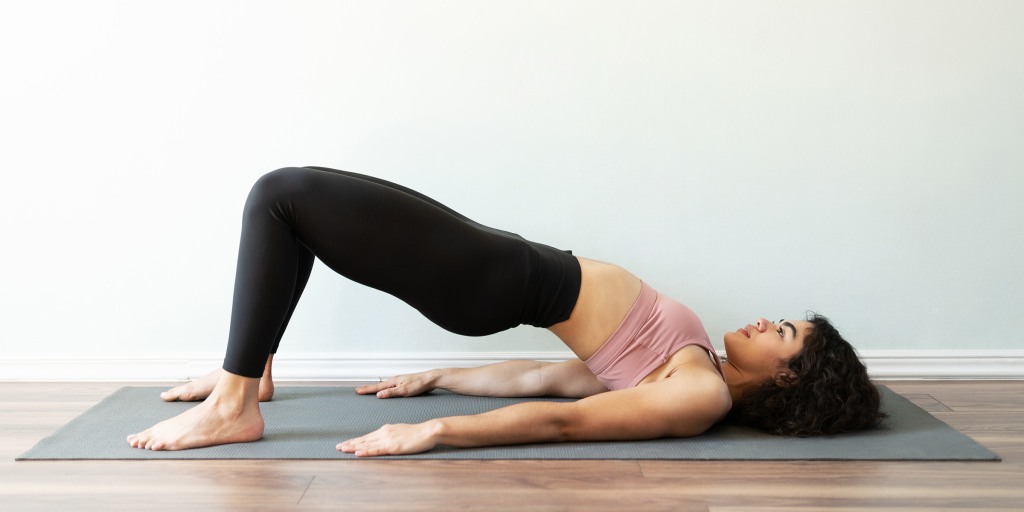If your hips feel stiff after sitting too long or you’ve struggled with poor posture, chances are your hip flexors are trying to tell you something. These deep-set muscles are crucial for nearly every lower-body movement you make—from walking and squatting to stabilizing your pelvis and spine. When they’re tight or weak, it can trigger a cascade of issues: lower back pain, poor alignment, and restricted movement. That’s why trainers and physical therapists consistently recommend a few essential exercises that both stretch and strengthen this vital area.
Whether you’re a fitness enthusiast or someone just looking to move more freely, the following four exercises can help restore hip mobility, reduce chronic discomfort, and unlock better body mechanics for everything you do.
1. Kneeling Hip Flexor Stretch: Unlock Tension from Hours of Sitting
This simple yet powerful stretch directly targets the iliopsoas and rectus femoris—two key muscles responsible for pulling your knees upward and stabilizing your pelvis. It’s ideal for those with desk jobs or anyone who feels that deep, pinching sensation in the front of their hips.
How to Do It:
Begin in a half-kneeling stance: one knee on the ground and the opposite foot flat in front of you, knee bent at 90 degrees. Engage your core, keep your torso upright, and gently shift your weight forward until you feel a stretch along the front of your rear hip. For an extra boost, raise the same-side arm overhead and lean slightly away from the kneeling leg. Hold the stretch for 20–30 seconds, then switch sides.
Pro Tip: Use a yoga block or folded towel under your knee for support. If kneeling is uncomfortable, try a standing variation using a long lunge stance instead.
2. Standing Leg Lifts: Strengthen for Stability and Balance
Once flexibility is addressed, it’s just as important to build strength in the hip flexor group. Standing leg lifts activate those exact muscles while also working your core and improving neuromuscular control.
How to Do It:
Stand tall, feet hip-width apart, and hold a wall or chair for support if needed. Slowly lift one leg straight in front of you without bending your knee. Keep your pelvis neutral and avoid leaning back. Pause at the top, then return to the starting position. Perform 10–12 reps per leg for 2–3 sets.
Trainer Insight: Add ankle weights or a resistance band around your thighs to increase difficulty. Avoid quick, jerky movements—controlled lifts are more effective.
3. Seated Marches: A Gentle Way to Wake Up Your Hips
Perfect for beginners, older adults, or those recovering from injury, seated marches are a safe and accessible way to improve circulation and mobility in the hip area. While it may look easy, this movement trains your hip flexors to work independently and in coordination with your core muscles.
How to Do It:
Sit in a sturdy chair with your back straight and feet flat on the ground. Without leaning backward, lift one knee toward your chest, then lower it with control. Alternate legs, keeping a slow and steady rhythm. Continue for 30–60 seconds, rest, and repeat for 2–3 rounds.
Tip for Progression: To advance, add ankle weights or use a resistance band looped under your feet to create tension.
4. Mountain Climbers: Activate While You Elevate Your Heart Rate
If you’re looking for something more dynamic that blends cardio and core work, mountain climbers are your go-to. They combine rapid hip flexor activation with full-body engagement, helping you build endurance and real-world strength.
How to Do It:
Start in a high plank with your shoulders stacked above your wrists and your body in a straight line. Drive one knee toward your chest, then quickly switch, alternating legs in a fluid running motion. Focus on form over speed—avoid letting your hips sag or bounce.
Customize It: Beginners can step forward slowly instead of running, or try the movement elevated on a bench to reduce wrist pressure.
Why Hip Flexor Care Is Essential
Most people don’t realize just how much their hip flexors influence the rest of their body. When these muscles are stiff or underused, it affects how you walk, sit, run, and even sleep. Poor mobility in this area often leads to an anterior pelvic tilt—where your pelvis tilts forward, putting extra strain on your lumbar spine. Over time, that can turn into persistent back pain or even nerve issues.
“Your hips are the bridge between your upper and lower body,” says Dr. Sarah Lewis, a certified physical therapist specializing in functional mobility. “Keeping them strong and supple is like giving your body a better foundation—it affects how you move, stand, and perform in almost every daily activity.”
These four exercises aren’t just about flexibility or strength in isolation—they represent a balanced approach to functional fitness. By dedicating just a few minutes daily to hip flexor care, you can reverse the effects of prolonged sitting, prevent injury, and improve your overall movement efficiency.
Final Thoughts
Tight or weak hip flexors don’t have to be your norm. Whether you’re just starting your fitness journey or looking to optimize your athletic performance, the exercises above are low-barrier, effective, and accessible. As trainers and therapists have long known, a healthy body starts at the hips—and a few focused movements each day can deliver long-lasting benefits for posture, comfort, and mobility.
